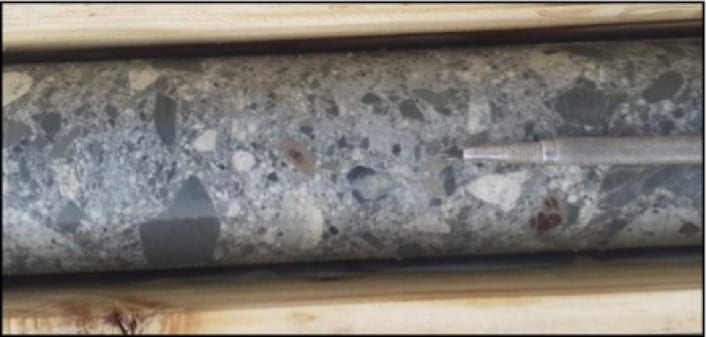Argentinian Project Shows Growing Potential
Challenger Exploration (ASX: CEL) has identified what is believes is a significant mineralised system at its flagship Hualilan Gold Project, located in San Juan Province, Argentina.
The company has now received the first drilling results from a 45,000m programme at Hualilan, where the first 10,000m was primarily dedicated to testing the thesis of an intrusion-hosted gold system underlying the historical high-grade skarn mineralisation.
Managing Director, Kris Knauer, said the potential for a significant intrusion-hosted gold system was indicated by recent drill holes GNDD-025 (88m at 1.0 g/t AuEq and ending in mineralisation) and GNDD-032 (116m at 1.2 g/t AuEq).
These were the only two holes to be assayed after encountering significant width of intrusive rocks
.Prior to these holes, the company had limited control on the distribution of the intrusives and their gold content, given previous explorers policy of not sampling the intrusives and generally terminating holes upon reaching them.
Mr Knauer said this first 10,000m has effectively been blind stratigraphic drilling as it has been focussed predominantly on the one-km undrilled Gap Zone between Cerro Sur and Cerro Norte which is under cover. The company fast tracked assays for the first six holes into the intrusives to assist with a decision on the continuation of this programme.
The company said that despite the stratigraphic nature of the drilling, the results from these first six drill holes, and visual inspection of a further 25 holes (assays pending), have significantly exceeded its expectations.
“They confirm not only the presence of a large intrusion-hosted gold system containing broad zones of bulk gold mineralisation, but also significant zones of high-grade mineralisation,” Mr Knauer said.
The limited scout drilling into the intrusives has now intersected broad zones of plus 1 g/t gold over 1.5 km of strike in five of 10 holes drilled by the company encountering more than 50m of intrusives.
The average grade of the intrusion-hosted mineralisation across the company’s drill holes is 1.1 g/t AuEq (0.9 g/t AuEq if GNDD-088 is excluded), with only one drill hole, interpreted to have intersected a late stage post mineral breccia, recording no mineralisation.
A programme of deeper drilling is ongoing with a further 25 holes deeper than 200m now completed stepping north and south into the Gap Zone and to the south at Sentazon.
Three of the five rigs will continue to define this large intrusion-hosted discovery. The other two rigs are targeting extensions to the high-grade mineralisation at Sanchez, Magnata and Sentazon.
“We are now confident that there is an extensive intrusion-hosted gold system associated with the high-grade skarn mineralisation, and that this will vastly change the scale of the project,” Mr Knauer said.
“This first 10,000 metres testing the intrusions has effectively been blind stratigraphic drilling given that the gap zone is almost entirely under cover and the previous explorers holding a policy of terminating holes upon reaching intrusives and not undertaking assays.
“These exciting results demonstrate that the high grade mineralisation, which itself could potentially be a company maker, is only one part of the story at our flagship Hualilan Project.
“To achieve these types of results in a blind scout drilling program provides us with the expectation that the mineralisation in the underlying intrusives is both extensive and significant.
“Three rigs will continue targeting this new discovery and we are eagerly awaiting assays for a number of these deeper holes. Hualilan now looks like it could be much larger than we had anticipated.”












